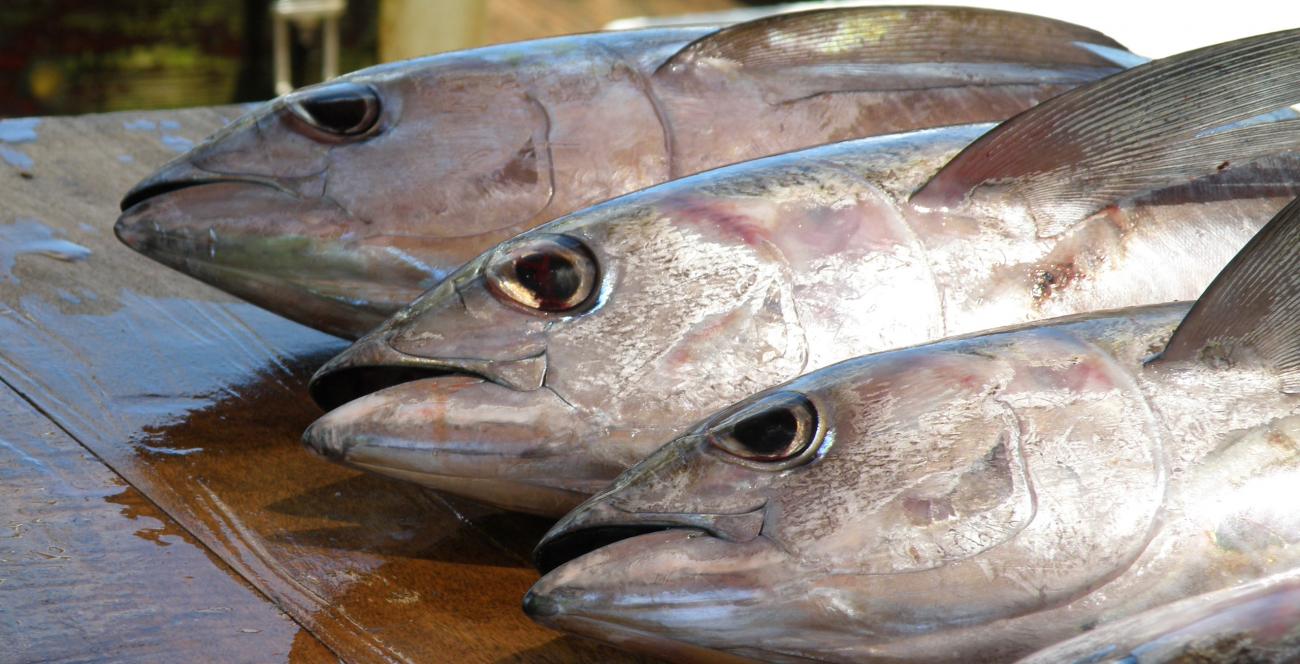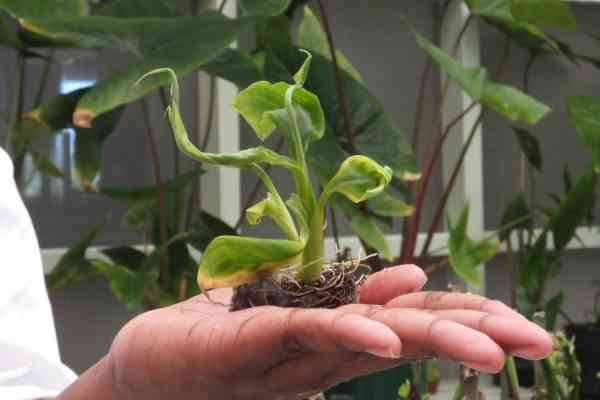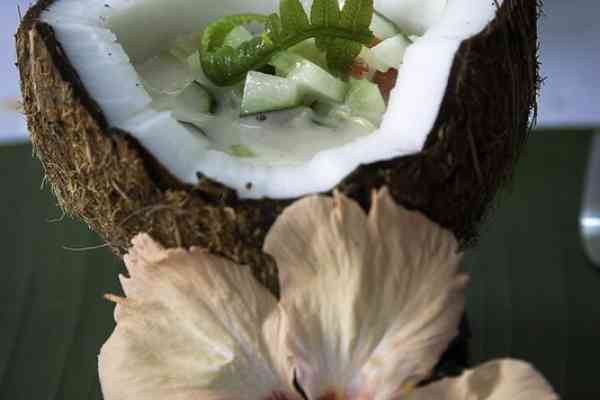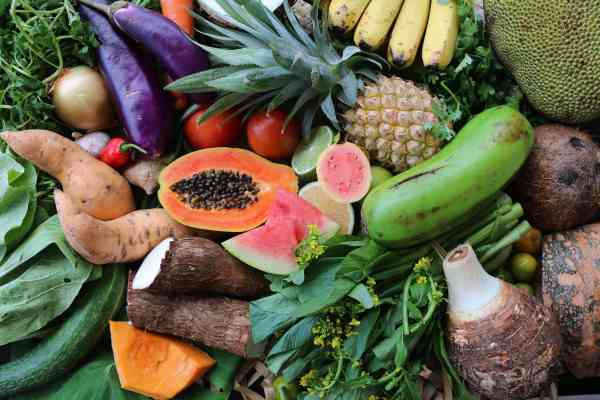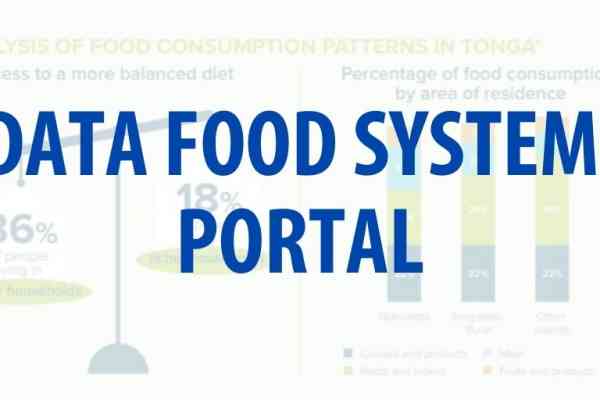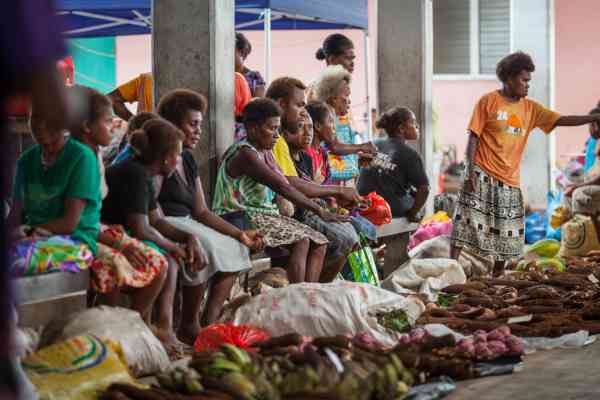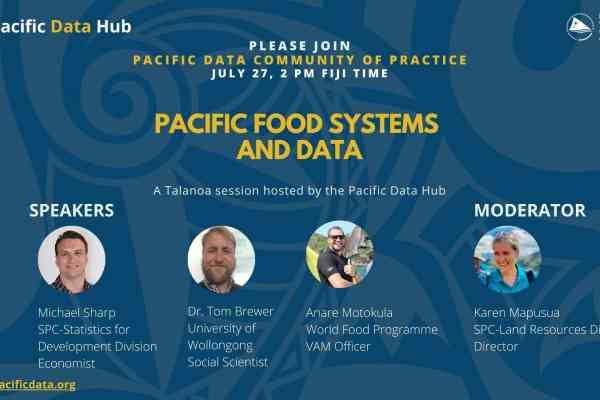(contenu disponible en anglais uniquement)
Keeping us all fed – The Pacific Food System
The term ‘food systems’ refers to interconnected activities involved in the production, processing, distribution, and consumption of food. They are enormously complex and important. And while food systems are now globally influenced, their impacts are invariably local.
The Pacific region’s crop diversity and sustainably managed tuna fishery are major contributors to the global food system but micronutrient deficiencies and the staggeringly high rate of non-communicable diseases in the region are direct outcomes of a regional food system in transition from one based on locally sourced and grown crops and catch, to one based largely on processed foods.
Add in the impacts of climate change, sea level rise, droughts, loss of biodiversity, the poor quality of small island soils and limited access to fresh water and you have local food systems that are especially precarious.
The Pacific Community’ Food Systems Flagship Programme is taking a long-term systemic and interconnected approach to understand, protect, and strengthen the Pacific Food System and ensure a future where everyone in the region is food secure and well nourished by a resilient and equitable food system.
Here are three of the many ways the Pacific Community (SPC), supported by the Australian Government, is working towards this goal together.
I remember lining up for rice, flour and eating potatoes. It was a nightmare.
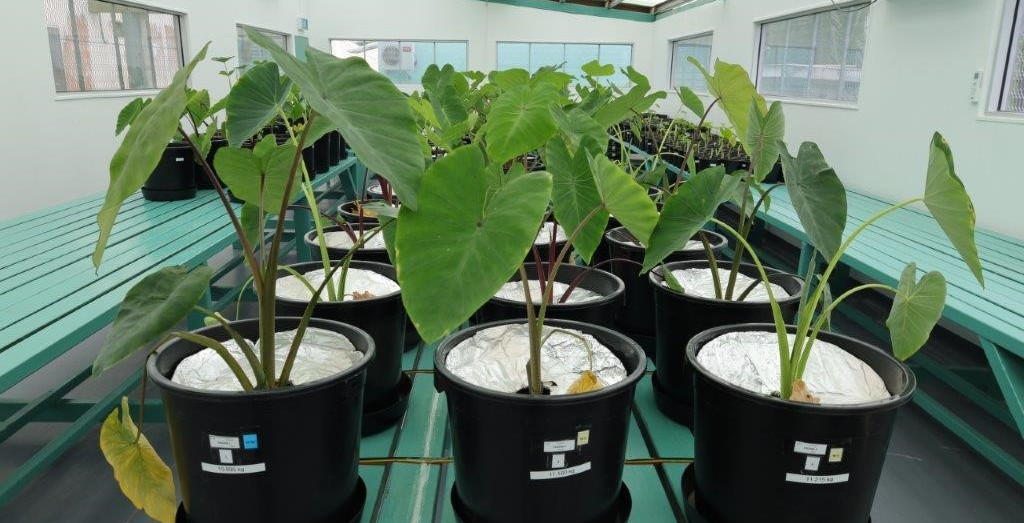
In 1993 taro leaf blight came to Samoa. A year later the country’s entire taro crop was dead, destroyed by the fungal disease that once established can never be eradicated.
“I was in college at the time, and I remember lining up for rice, flour and eating potatoes in the immediate aftermath of the blight. It was a nightmare” says Logotonu Meleisea Waqainabete, Programme Leader Genetic Resources at Pacific Community's Centre for Pacific Crops and Trees (CePaCT).
The devastation the taro leaf blight bought to Samoa is hard to overstate. Prior to the disease taro formed the basis of most Samoan diets and at the time exports of the crop bought in around AUD$4 million dollars annually to the country. But in the space of a year the entire crop vanished.
“Most of the fields were just taro and they all disappeared, it was like a cyclone had come and all the fields were bare”, remembers Logotonu who in her role at CePaCT leads genetic conservation and research efforts to ensure a wide genetic mix of crops are available to the Pacific to mitigate the impacts of similar events.
CePaCT was set up in 1998 with support from the Australian Government with the key aim of supporting food and nutrition security in the Pacific region – to protect and strengthen the Pacific food system - by conserving the regions genetic resources. CePaCT focuses on the regions key staple crops, taro, yam, sweet potato, banana, cassava and breadfruit. It houses one of the world’s largest collections of taro which are made available to the region and globally when needed.
Asked how the work of the centre supports the Food Systems programme, Logotonu says CePaCT is a at the heart of the Pacific food system. “We use science, technology, and innovation to ensure crop varieties are identified, stored and made available. Some varieties may have very good traits that make them resistant to the challenges that we're facing with climate change, and some of them may have good traits that might be more nutritious that can help us address issues we have with nutrition here in the region”, she says.
And while the Centre was set up to protect and strengthen the Pacific food system its work is helping communities around the world.
After an outbreak of taro leaf blight in the west Africa in 2010 CePaCT, under an EU funded project was tasked with providing taro leaf blight resistant varieties to assist farmers at risk of losing their entire crop. Based on initial evaluations carried out, these taro leaf blight resistant lines outperformed local varieties. “I got an email yesterday from our Ghana contact”, says Logo, “they said the farmers were really happy with the varieties we supplied and the distribution of these elite lines is still on-going”
Where’s the soil sample? This is just sand.
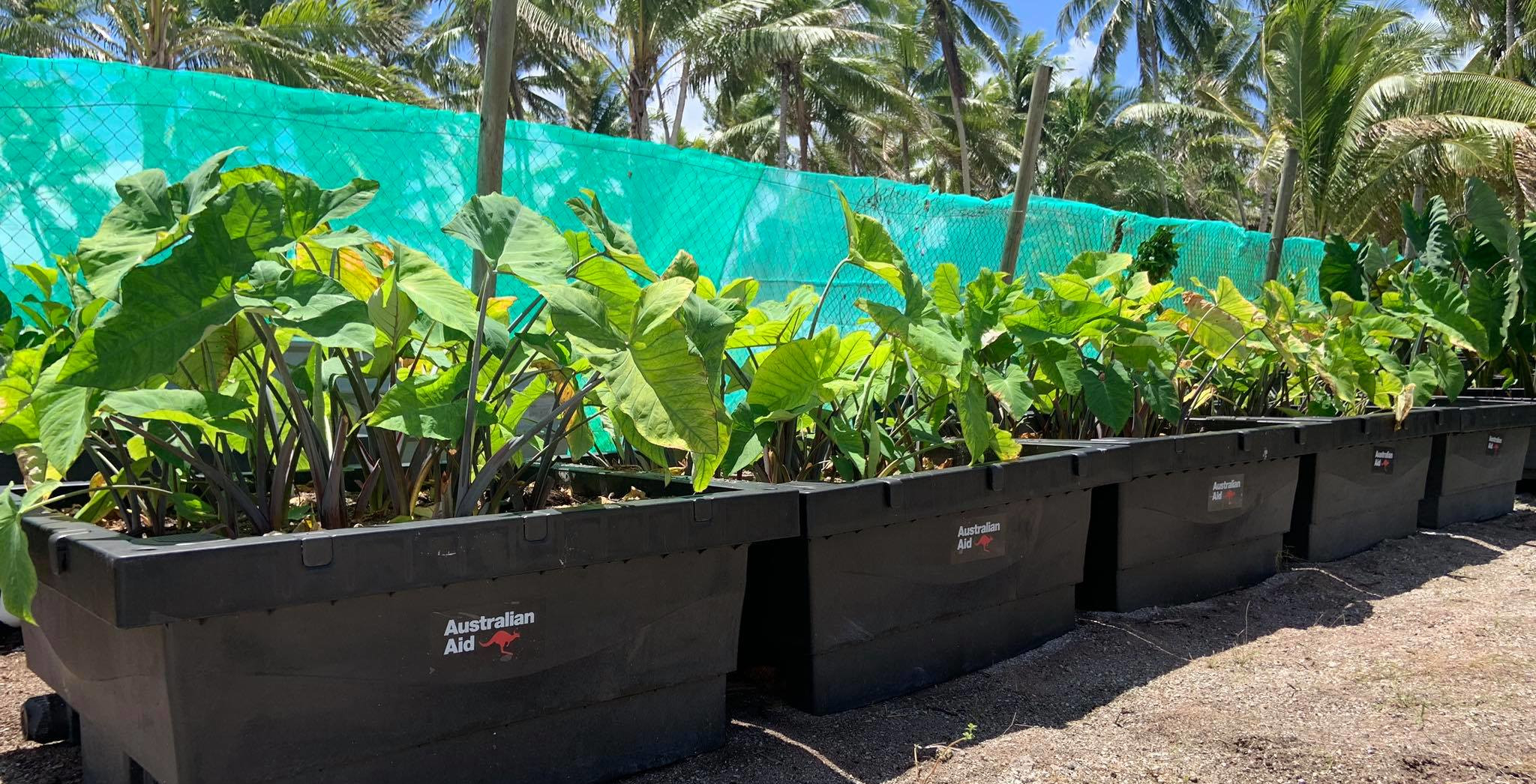
Growing food on an atoll is hard. Asked to describe why Gibson Susumu the Pacific Community’s sustainable Agriculture Programme Leader says soil is the biggest constraint for atolls, he then laughs and says it reminds him of a story. “One of my good friends in Kiribati did his masters in UK and when he came back to Kiribati he was supposed to send some soil samples to the UK for testing, he says. “When the soil samples arrived in UK, the Professor there emailed back and said, what’s this soil sample you sent me? It’s only sand!”
That’s where the food cube comes in. Food cubes are basically movable containers that can be filled with soil and used like garden beds to enable atoll households to grow their own diverse food crops. They are a ‘wicking based system’, meaning the soil or compost in the container draws water up from the base to provide the plants with the moisture they need to grow.
Initially trialled in a pilot project in Tuvalu, Fiji and Kiribati and later rolled out in FijiF, the food cube concept was a great success, “We found that it worked for swamp taro which is a staple crop there and for things like banana and papayas and many other vegetables. People were able to grow a wide range of crops that were not easily able to be grown in the atoll soil”, says Gibson.
Through Pacific Community’s partnership and support from the Australian Government, Gibson and his team are now looking at how to scale out the food cube technology to make it available to more Pacific countries and bringing down setup costs and logistics to make the technology even more accessible.
“In this next phase we won't be looking at just food cubes, we'll be looking at other similar kinds of technology to explore other approaches and innovations to support the food security needs of the target countries, stay tuned”, says Gibson.
To stop a trend, you need to know a trend exists.
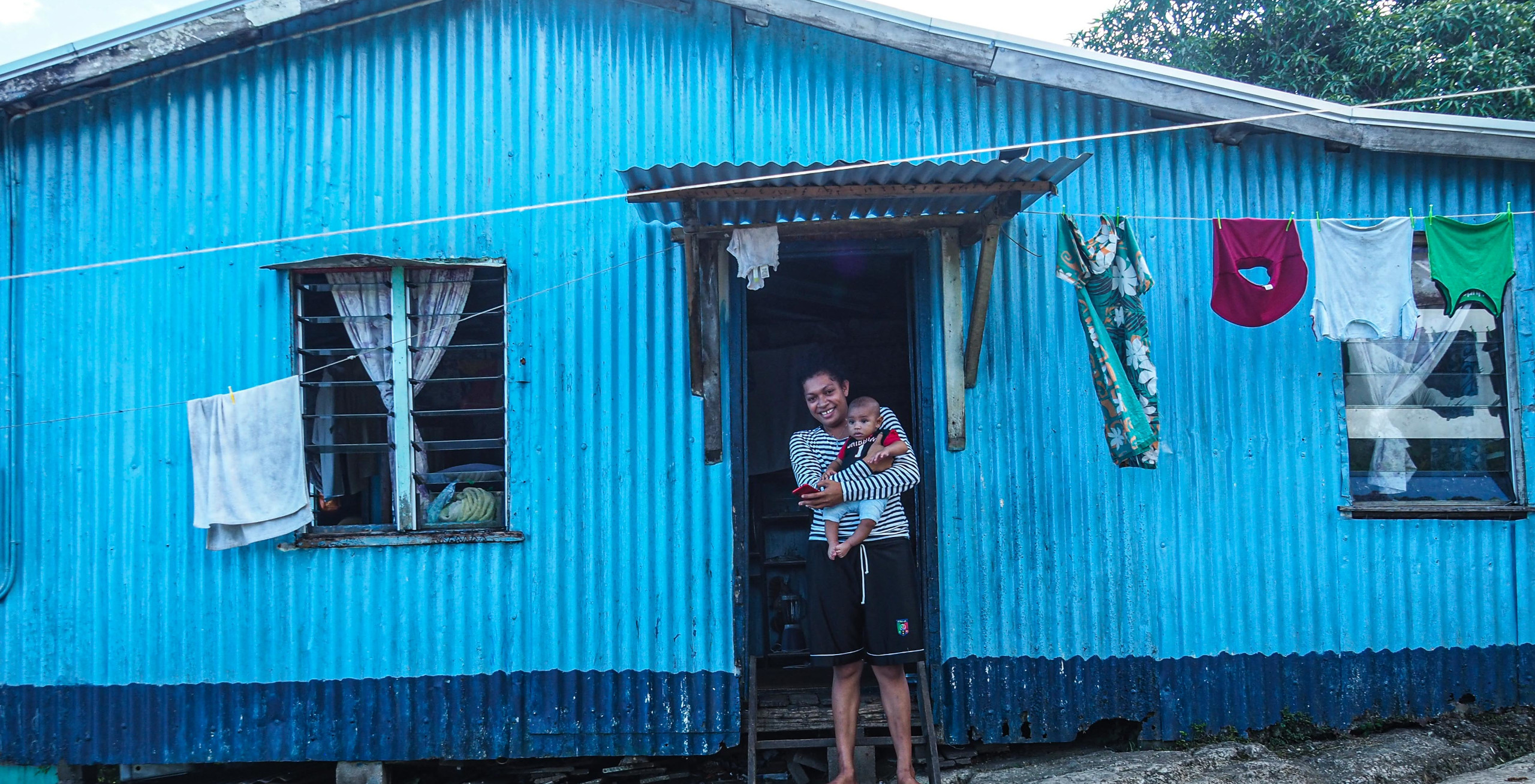
Using data and statistics to understand foods systems can tell us a lot about their influence and reach. But why is this important?
According to Michael Sharp, Economic Statistics and Microdata Specialist at SPC, it’s because without them we are blind. “Without data and statistics we don’t know where we’re at, or where we are going, and if we are on the right track to getting there”, he says.
Having access to data that reveals the true state of the food system that can be used to monitor and understand the transition of the Pacific system and its effects, and enable the formulation of effective public health policy, and over time, the measuring of the success of these policies is vital.
But data collection is an expensive and resource intensive process particularly for Pacific countries and territories where populations are spread across remote atolls and islands.
Take for example household income and expenditure surveys (HIES) that are used to collect data on things such as poverty and food security. The costs of running these surveys can be huge. A recent survey in the Solomon Islands cost US$700 per household and in Marshall Islands the recent HIES cost US$4000 per household to run.
Doing a household income and expenditure survey is also super labour intensive. In some instances, interviewers stay in villages for 3 weeks to oversee households filling out a 14-day diary listing everything they buy, eat and earn. Not to mention the burden on those filling out the diary. Having to remember to do it every day on top of the usual business of life leads to a thing researcher in the space call ’diary fatigue’ which is fairly self-explanatory and can lead to the data collected from these surveys being skewed.
The high cost and labour intensity of these surveys also means they’re carried out infrequently, every 9 years on average in the Pacific, which in turn means the true state of the food system and its effects can be invisible, which is a problem. As Michael Sharp says, “to stop a trend, you need to know a trend exists”.
In an effort to reveal existing trends in a cost-effective and therefore accessible way, an experiment was carried out in the Marshall Islands comparing the cost and accuracy of several survey collection methods.
A new report, on the experiment, which was funded by the Australian Government and carried out by SPC in partnership with the Economic Policy, Planning and Statistics Office (EPPSO) of the Government of the Marshall Islands and the World Bank found single-visit seven-day recall surveys, where households are visited once, give similar results to the old school 14-day daily diary method for much less cost. This has led to the adoption of this method for data collection in the Kiribati, Marshall Islands and Vanuatu.
“We’ve adopted Pacific appropriate, and internationally best practice, statistical methods and we've implemented them and produced numerous outputs using those methods.
One example is the Hardship in Vanuatu report that has allowed the Vanuatu Government establish a baseline to work towards ending poverty in the country”, says Michael Sharp.
Also uncovering trends and revealing the state of the Pacific food system is the appropriately named Food Systems project led by SPC and the University of Wollongong and funded by the Australian Government.
Currently in process, this project has so far compiled food consumption data, ie. data on what people are eating, for 15 Pacific countries. This has then been used to create, for the first time, a snapshot in time of food consumption in the region.
“When the survey is done again, likely sooner than 9 or 10 years thanks to the adoption of the new method, we can get an updated time series of what people are eating – something that has never existed before and once it does, the possible applications for policy and capacity building are endless,” says Michael Sharp.
PACIFIC FOOD SYSTEMS THINKING
The Pacific Community’s Food Systems Flagship Programme is vast. Its interconnectedness mirrors the interconnectedness of food systems themselves.
By working to ensure the Pacific food system is nutritious and resilient to the impacts of climate change, by working to ensure Pacific people can grow nutritious food and by working to ensure governments and policy makers are able to clearly see the current state and likely future of the food system, SPC aims to ensure the Pacific food system is resilient, sustainable, and nutritious for all Pacific people.
